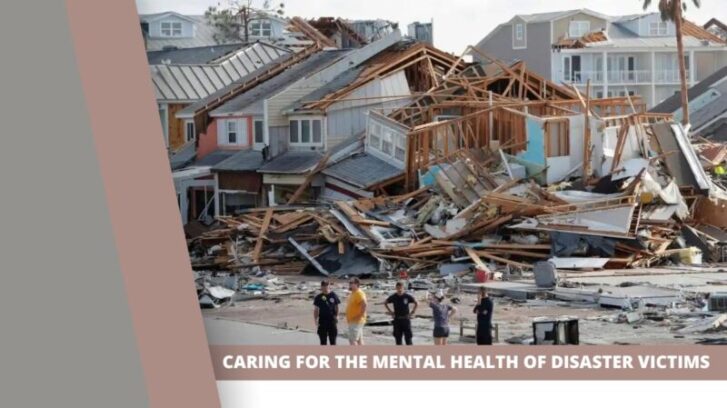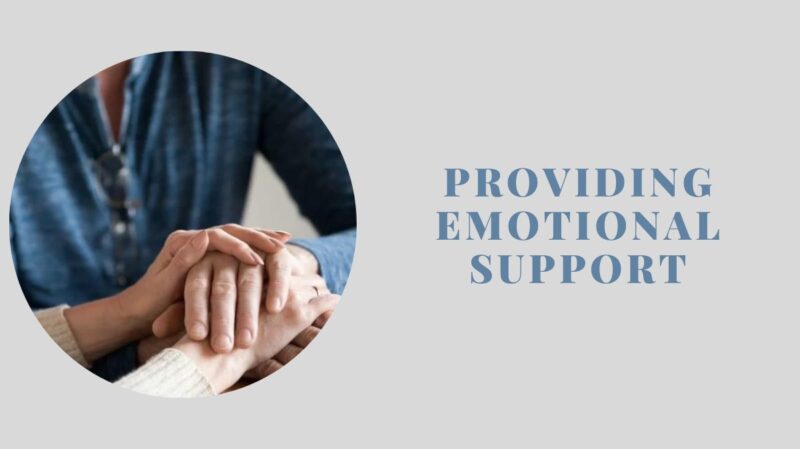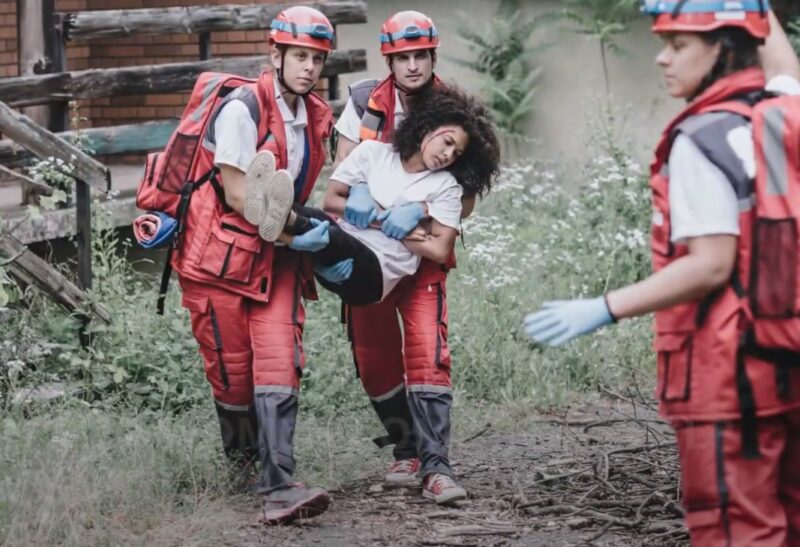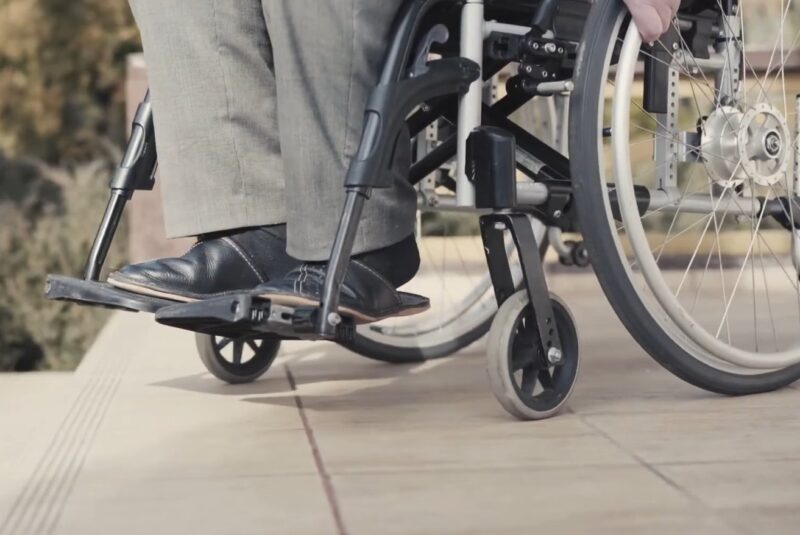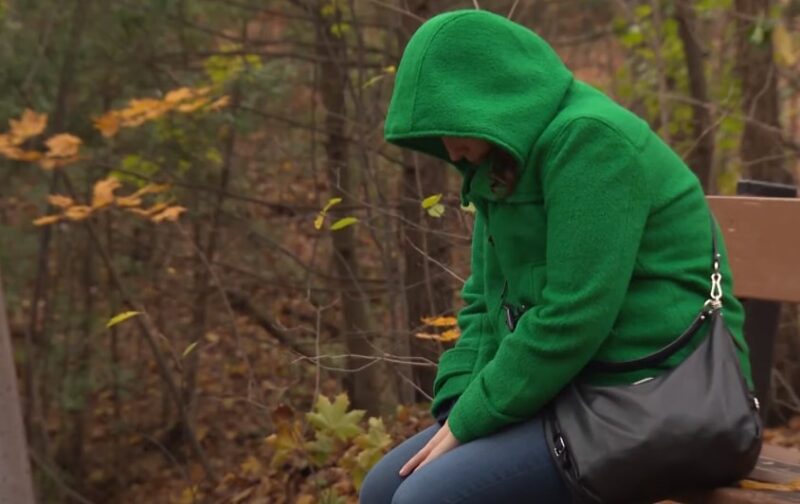Disasters, whether natural or man-made, can have a profound impact on the mental health of those affected. The sudden and often devastating nature of these events can lead to a range of psychological reactions, from acute stress reactions to long-term disorders. Understanding these reactions is crucial to providing effective support and care to disaster victims.
Common psychological reactions to disasters include shock, disbelief, fear, sadness, helplessness, guilt, anger, and even physical symptoms such as changes in appetite or sleep patterns.
These reactions are normal responses to abnormal situations, and most people will recover over time with the right support. However, some individuals may develop more serious mental health conditions such as post-traumatic stress disorder (PTSD), depression, or anxiety disorders.
Addressing the mental health needs of disaster victims is an essential part of disaster recovery. Support can help individuals process their experiences, cope with their emotions, and regain a sense of control and normalcy. Moreover, interventions can also prevent the development of long-term disorders, improving the overall recovery and resilience of affected individuals and communities.
Providing Emotional Support
In the immediate aftermath of a disaster, providing emotional support to those affected can be a lifeline. Emotional support can help individuals feel understood, validated, and less alone in their experiences. It can also provide a sense of safety and stability in a time of chaos and uncertainty.
Active listening and empathy are key to providing effective emotional support. Active listening involves fully focusing on the speaker, avoiding interruptions, and responding in a way that shows understanding and respect. Empathy, on the other hand, involves understanding and sharing the feelings of another. By demonstrating empathy, we can help disaster victims feel seen, heard, and understood, which can be incredibly healing.
Peer support, where individuals with similar experiences provide emotional and practical support to each other, can also be beneficial in disaster situations. Peer support can foster a sense of community and shared understanding, reducing feelings of isolation and helplessness. Moreover, peer support can empower individuals to take an active role in their own and others’ recovery, promoting resilience and hope.
Recognizing Signs of Post-Traumatic Stress Disorder (PTSD)
PTSD is a mental health condition that can develop after experiencing or witnessing a traumatic event, such as a disaster. It is characterized by intrusive memories or flashbacks of the event, avoidance of reminders of the event, negative changes in thoughts and mood, and increased arousal and reactivity. PTSD can significantly impair an individual’s daily functioning and quality of life.
Recognizing the signs of PTSD is crucial to ensuring that affected individuals receive the help they need. These signs may include recurrent, distressing memories or dreams of the event; intense or prolonged psychological distress at exposure to reminders of the event; persistent and exaggerated negative beliefs or expectations about oneself, others, or the world; feelings of detachment or estrangement from others; and hypervigilance or exaggerated startle response.
Early intervention and professional help for PTSD can greatly improve an individual’s recovery and prognosis. Treatment for PTSD typically involves psychotherapy, such as cognitive-behavioral therapy or eye movement desensitization and reprocessing, and may also include medication. It’s important to remember that PTSD is not a sign of weakness, but a normal reaction to abnormal circumstances, and that help is available.
Building Resilience in Disaster Recovery
Resilience refers to the ability to adapt and bounce back in the face of adversity. In the context of disasters, resilience can help individuals and communities recover more quickly and effectively. Building resilience involves fostering positive emotions, developing coping skills, and strengthening social connections.
Strategies to help disaster victims develop and strengthen resilience include promoting self-care, teaching stress management techniques, facilitating positive thinking and problem-solving skills, and encouraging social support. These strategies can help individuals manage their emotions, cope with stress, and maintain a positive outlook, which can in turn enhance their resilience.
Community support and resources can also play a crucial role in fostering resilience. Communities can provide emotional support, practical assistance, and a sense of belonging, all of which can bolster resilience. Moreover, community resources such as mental health services, social services, and educational programs can provide essential support and tools for recovery.
Coping with Grief and Loss
Grief and loss are common experiences in the aftermath of a disaster. Individuals may lose loved ones, homes, possessions, or a sense of safety and normalcy. Understanding and supporting the grieving process is an important part of disaster recovery.
The grieving process is unique to each individual and can involve a range of emotions, including shock, denial, anger, sadness, and acceptance. Providing support and resources for individuals experiencing loss can help them navigate their grief and begin to heal. This support may include emotional support, grief counseling, support groups, and practical assistance.
Promoting healthy coping mechanisms for grief and bereavement is also crucial. These may include expressing emotions through talking or writing, maintaining routines, taking care of physical health, seeking support from others, and finding ways to remember and honor lost loved ones. It’s important to remember that there is no right or wrong way to grieve, and that each person’s grief journey is unique.
Self-Care for Disaster Relief Workers
Disaster relief work can be highly stressful and demanding, making self-care essential for maintaining physical and mental health. Self-care refers to activities and practices that individuals can engage in on a regular basis to reduce stress and maintain and enhance their well-being.
Practical self-care strategies for disaster relief workers may include maintaining a healthy diet, getting regular exercise, ensuring adequate sleep, taking breaks, practicing relaxation techniques, and seeking support from colleagues, friends, and family. These strategies can help manage stress, prevent burnout, and promote overall well-being.
Encouraging a culture of self-care within disaster response teams is also important. This can involve providing education and resources on self-care, promoting work-life balance, and creating a supportive and understanding work environment. By prioritizing self-care, disaster relief workers can better maintain their health and effectiveness, ultimately enhancing their ability to support disaster victims.
Addressing the Mental Health of Children in Disasters
Children can be particularly vulnerable in disaster situations, facing unique challenges and needs. They may struggle to understand and cope with the event, and may experience fear, confusion, sadness, and behavioral changes. Addressing the mental health of children in disasters is therefore a critical priority.
Promoting children’s emotional well-being and resilience can involve providing emotional support, helping them express their feelings, maintaining routines and normalcy as much as possible, and providing age-appropriate information about the event. These strategies can help children feel safe, understood, and capable of coping with their experiences.
Creating safe spaces and supportive environments for children after a disaster is also crucial. This can involve providing physical spaces where children can play and relax, as well as emotional spaces where they can express their feelings and receive support. Such spaces can provide a sense of safety and stability, helping children recover and thrive.
Trauma-Informed Care for Disaster Victims
Trauma-informed care is an approach to care that recognizes and responds to the impact of trauma on individuals’ mental, physical, and emotional health. In disaster settings, trauma-informed care can help ensure that services and supports are sensitive to the needs of trauma survivors and do not inadvertently retraumatize them.
The principles of trauma-informed care include safety, trustworthiness and transparency, peer support, collaboration and mutuality, empowermentand choice, and cultural, historical, and gender issues. These principles guide the delivery of care, ensuring that it is respectful, empowering, and effective.
Implementing trauma-informed practices in disaster response and recovery can involve providing education and training to service providers, integrating trauma-informed principles into policies and procedures, and creating safe and supportive environments. These practices can enhance the quality and effectiveness of services, promoting healing and recovery for disaster victims.
Supporting Vulnerable Populations in Disasters
Certain populations may be particularly vulnerable in disaster situations, including children, older adults, individuals with disabilities, and individuals with pre-existing mental health conditions. These populations may have specific mental health needs and may face barriers to accessing support and services.
Strategies to ensure inclusivity and accessibility in mental health support can involve providing targeted services and supports, adapting services to meet specific needs, and advocating for the rights and needs of vulnerable populations. These strategies can help ensure that all individuals, regardless of their circumstances, have access to the support and care they need.
Collaborating with community organizations can also be an effective way to reach vulnerable populations. Community organizations often have established relationships and trust with these populations, and can provide valuable insights and resources. Through collaboration, we can ensure that our efforts are coordinated, effective, and responsive to the needs of all community members.
Promoting Community Mental Health Resilience
The community plays a vital role in mental health recovery after a disaster. A supportive and cohesive community can provide emotional support, practical assistance, and a sense of belonging, all of which can promote and resilience.
Building social support networks and fostering community cohesion can involve organizing community events, promoting communication and collaboration, and providing opportunities for community members to support each other. These efforts can strengthen community bonds, enhance collective resilience, and promote a sense of hope and positivity.
Engaging community members in education and preparedness can also be beneficial. This can involve providing information and resources on mental health, promoting literacy, and encouraging community members to take an active role in their own and others’ mental health. By empowering community members with knowledge and skills, we can enhance the community’s capacity to support and resilience.
Addressing Secondary Traumatic Stress in Helpers
Secondary traumatic stress refers to the emotional distress that can result from indirect exposure to traumatic events, such as through helping or wanting to help a traumatized or suffering person. Disaster response workers are particularly at risk of secondary traumatic stress due to their close involvement with disaster victims.
Recognizing signs of secondary traumatic stress in oneself and others is crucial to ensuring well-being and effectiveness. These signs may include intrusive thoughts, avoidance behaviors, negative mood and cognition, and arousal symptoms. It’s important to remember that secondary traumatic stress is not a sign of weakness, but a normal reaction to abnormal circumstances, and that help is available.
Self-care strategies and organizational support can help mitigate secondary traumatic stress. Self-care strategies may include maintaining a healthy lifestyle, practicing relaxation techniques, seeking support, and setting boundaries. Organizational support may involve providing education and resources on secondary traumatic stress, promoting a supportive work environment, and providing opportunities for debriefing and supervision.
Accessing Services in Disaster-Affected Areas
Accessing mental health services in disaster-affected areas can be challenging due to factors such as physical damage to infrastructure, displacement of populations, and increased demand for services. Identifying available resources and support networks is therefore a crucial part of disaster response and recovery.
Challenges and barriers to accessing mental health services can be addressed through strategies such as mobile clinics, tele-mental health services, and collaboration with community organizations. These strategies can help ensure that services are accessible and responsive to the needs of disaster-affected populations.
Long-Term Recovery after Disasters – Final Words
Disasters can have long-term effects on mental health, with some individuals experiencing ongoing distress, mental health disorders, or changes in their mental well-being. Understanding and addressing these long-term effects is an important part of disaster recovery.
The long-term mental health effects of disasters can include PTSD, depression, anxiety disorders, and substance use disorders. These conditions can significantly impact an individual’s daily functioning and quality of life, and may require ongoing care and support.
The continuum of care in disaster recovery involves transitioning from immediate response to long-term recovery. This can involve providing ongoing services, supporting individuals in returning to their daily activities and roles, and promoting resilience and growth. It’s important to remember that recovery is a process, and that each individual’s journey is unique.
Promoting resilience, healing, and growth in the aftermath of a disaster can involve fostering positive emotions, developing coping skills, strengthening social connections, and providing opportunities for meaning-making and post-traumatic growth. These strategies can help individuals not only recover from the disaster, but also grow and thrive in its aftermath.
Related Posts:
- Exploring 7 Benefits of Red Light Therapy for Mental…
- Family Support in Mental Health Treatment:…
- The Role of Humanistic and Existential Therapy in…
- Partial Hospitalization Programs for Mental Health:…
- CBT: An Effective Mental Health Treatment - Best…
- Professional Athletes Mental Health: Pushing the Limit

